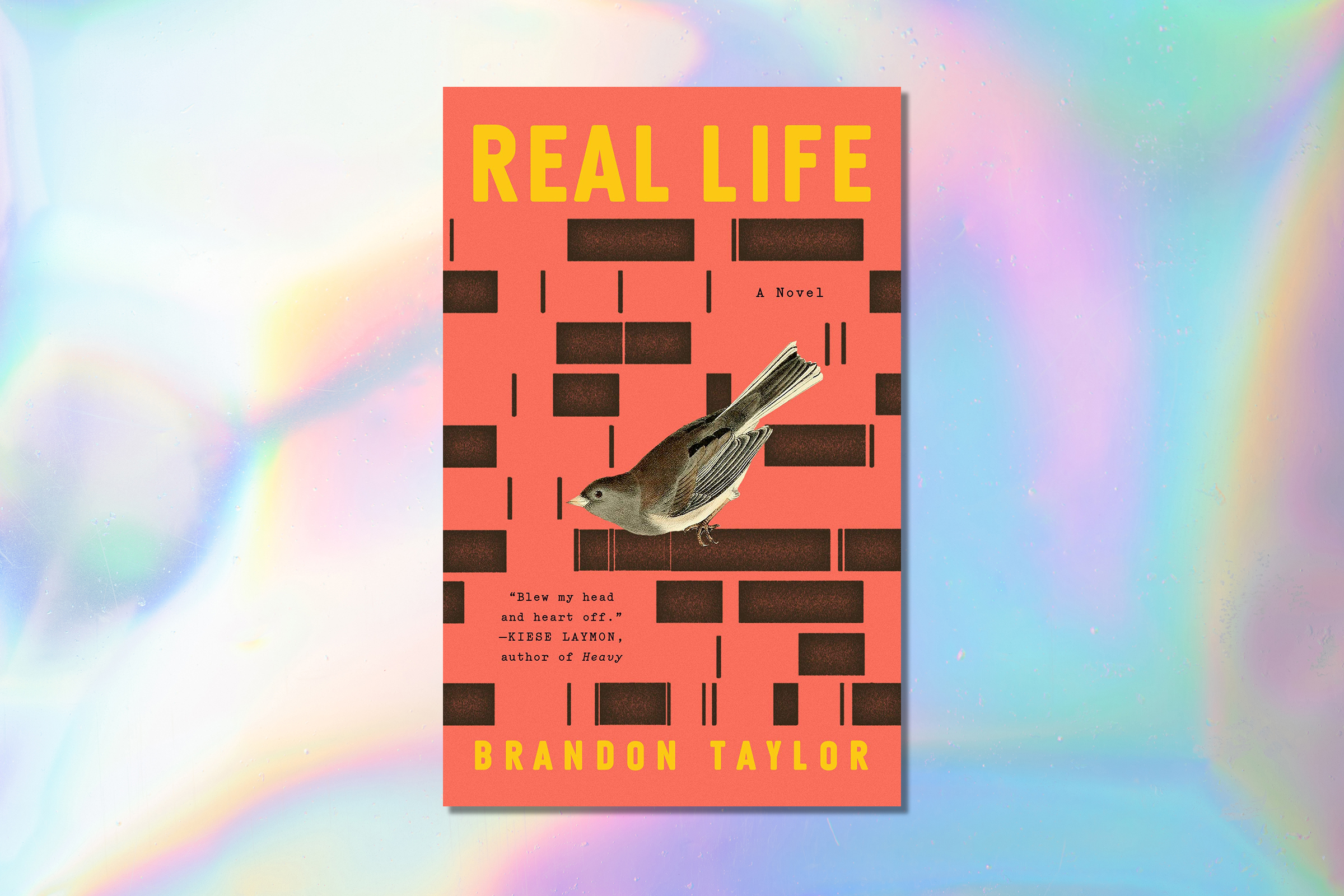
In Brandon Taylor’s highly-anticipated novel Real Life, protagonist Wallace — Southern, black and gay — has left behind his family and their fraught shared history to pursue graduate studies in biochemistry at a predominantly white Midwestern university. The novel unfolds over three long days spent in and out of the lab, diving into the daily indignities Wallace faces in a quietly toxic environment.
Wallace finds himself stressed by the discovery that his experiment, breeding nematode worms, has been ruined by mold; we wonder, perhaps, if it was the work of a saboteur. Still, he chooses to celebrate the last weekend of summer with friends from his program. But as the only black person among this clique of academics, he maintains an uneasiness around the group, keeping largely to himself. He could make more of an effort to hang, he knows, but given his peers’ casual displays of prejudice, projection and general lack of awareness, it’s easy to understand why he’s wary. These so-called friends, after all, are guilty of shades of aggression from micro to macro, and none ever come to his defense. As Taylor writes, “There will always be good white people who love him and want the best for him but who are more afraid of other white people than of letting him down.”
This would be enough to justify the distance Wallace maintains. But he’s burdened with so much more: what Wallace’s friends don’t know is that his father recently died, a loss that is complicated by the fact that the man had failed to protect his young son from sexual abuse. Taylor unearths these layered struggles with tenderness and complexity, from the first gorgeous sentence of his book to its very last.
Some of us carry our past much further than we imagined we would. We think we’ve buried it or, even better, made our peace with it. And then, life reveals otherwise. Reading Real Life — which is equal parts captivating, erotic, smart and vivid — reminded me of experiences from my own history: I had no clue how much I actually wanted love until I met someone whose love I felt I couldn’t live without.
For Wallace, it’s a budding relationship with Miller — an ostensibly straight, white man in his friend group, with demons of his own — that helps him begin to recognize that he longs for affection as much as anyone. Their dynamic, as it unfolds, is both confusing and volatile. Relationships between queer men and men who are straight — or at least who present as such — can be difficult to depict, when our culture is so rigid in its portrayal of sexuality and masculinity, but the ambiguity Taylor creates on the page between Wallace and Miller is devastatingly effective.
Taylor’s book isn’t about overcoming trauma or the perils of academia or even just the experience of inhabiting a black body in a white space, even as Real Life does cover these subjects. Taylor is also tackling loneliness, desire and — more than anything — finding purpose, meaning and happiness in one’s own life. What makes it most special, though, is that Real Life is told from the perspective of Wallace, who, like so many other gay black men I know, understands how such a quest is further complicated by racism, poverty and homophobia. Such is often the case with publishing itself, an industry that is only now releasing works from queer black men. How fortunate we are for Real Life, another stunning contribution from a community long deserving of the chance to tell its stories.
More Must-Reads From TIME
- The 100 Most Influential People of 2024
- Coco Gauff Is Playing for Herself Now
- Scenes From Pro-Palestinian Encampments Across U.S. Universities
- 6 Compliments That Land Every Time
- If You're Dating Right Now , You're Brave: Column
- The AI That Could Heal a Divided Internet
- Fallout Is a Brilliant Model for the Future of Video Game Adaptations
- Want Weekly Recs on What to Watch, Read, and More? Sign Up for Worth Your Time
Contact us at letters@time.com